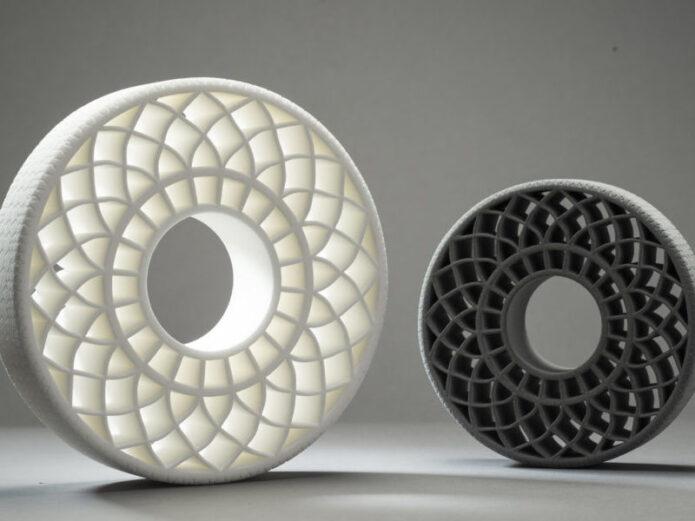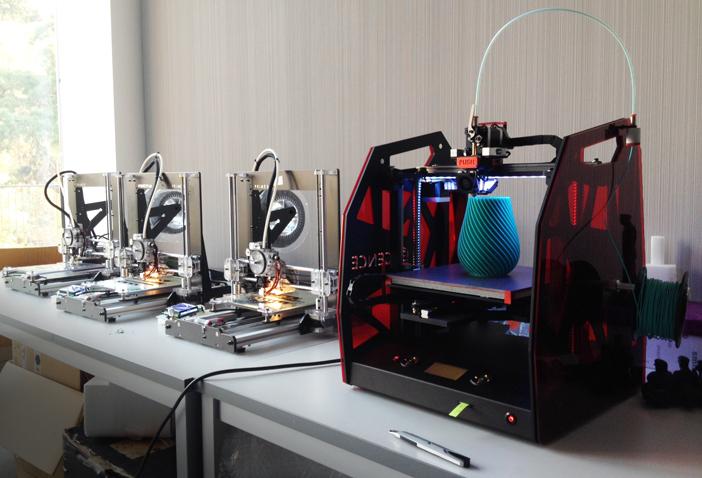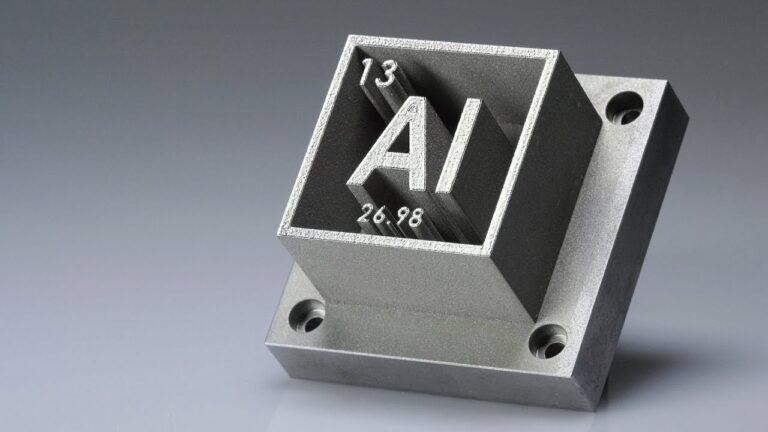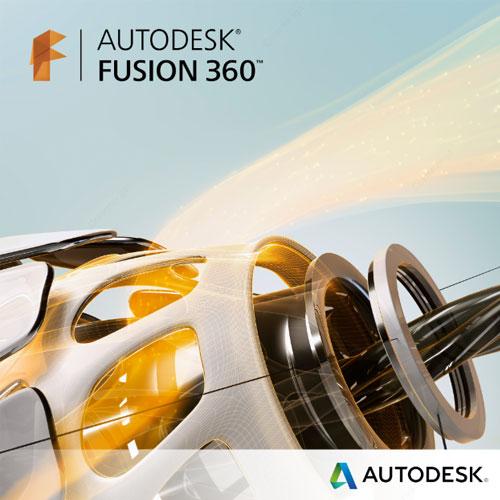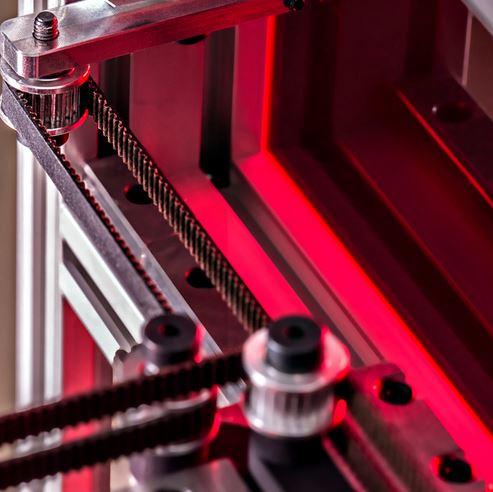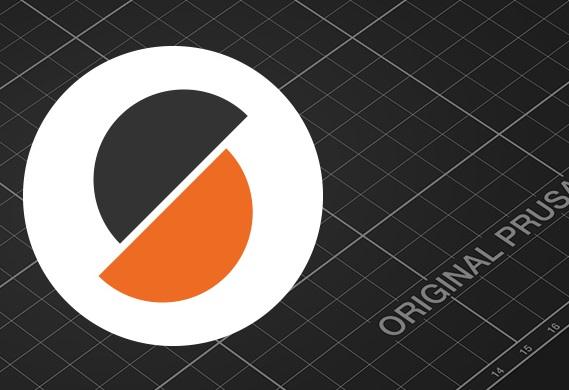Delta 3D Printer: Revolutionizing Rapid Prototyping and Manufacturing
Introduction
In the field of additive manufacturing, Delta 3D Printer technology is causing a stir. For both quick prototyping and manufacturing applications, it provides exceptional speed and precision as a novel solution. The distinctive design of Delta 3D printers not only offers exceptional accuracy, but it also fuels their rising popularity. In order to produce complex, high-quality items, various sectors throughout the world are utilizing the capabilities of these modern printers. Furthermore, Delta 3D printers are ready to change the way that 3D printing will be done in the future as a result of ongoing improvements and breakthroughs.
A brief overview of Delta 3D printers
Delta 3D printers have taken the additive manufacturing world by storm, offering unique advantages over traditional Cartesian printers. The innovative design of these printers is characterized by three vertical linear rails, which control the movement of the print head. Consequently, this allows for greater accuracy and a larger build volume, making them ideal for various applications.
Moreover, the triangular structure of Delta 3D printers contributes to their distinctive appearance and functionality. This design enables the print head to move smoothly and rapidly, resulting in faster print speeds and finer resolution. In fact, many professionals and hobbyists alike have embraced these printers for their reliability and high-quality output.
Furthermore, the versatility of Delta 3D printers has expanded their reach into several industries. Users can choose from a wide range of materials, from PLA and ABS to more advanced materials like nylon and flexible filaments. This flexibility has led to the development of numerous innovative products and prototypes.
In addition, the growing popularity of Delta 3D printers has driven manufacturers to create models catering to various needs and budgets. From entry-level options to high-end professional units, there is a Delta 3D printer suitable for every user. This accessibility has further propelled their adoption in diverse sectors.
In conclusion, the rise of Delta 3D printer technology has undoubtedly revolutionized the world of additive manufacturing. Their distinctive design, speed, and precision have garnered widespread acclaim, making them a popular choice for professionals and enthusiasts alike.

Importance of rapid prototyping and manufacturing
Rapid prototyping and manufacturing have become essential components in today’s fast-paced industries. With the advent of Delta 3D printer technology, companies can now accelerate product development cycles and bring innovations to market more quickly. Furthermore, these printers enable the creation of complex geometries and intricate designs that were once considered impossible or too time-consuming. As a result, industries ranging from automotive to healthcare have embraced Delta 3D printers for their rapid prototyping needs, fostering a new era of cutting-edge solutions and efficient manufacturing processes.
Advantages of Delta 3D Printers
Delta 3D printers boast numerous advantages that set them apart from traditional 3D printers. Firstly, their unique design enables faster print speeds without sacrificing accuracy or resolution. Additionally, these printers are known for their low maintenance requirements, making them an ideal choice for both professionals and hobbyists. Moreover, Delta 3D printers often have larger build volumes, allowing for the production of sizeable objects in a single print run. Overall, the benefits of Delta 3D printers have made them a popular choice in the additive manufacturing community, driving further innovation and development in the field.
Speed and accuracy
One of the most notable benefits of Delta 3D printers is the impressive combination of speed and accuracy they offer. Thanks to their triangular design, these printers facilitate rapid print head movement while maintaining remarkable precision. Furthermore, their reduced number of moving parts minimizes the risk of errors, contributing to a consistently high print quality. Consequently, Delta 3D printers have become the go-to choice for individuals and businesses seeking efficient, reliable, and precise additive manufacturing solutions.
Low maintenance and operational costs
Another appealing aspect of Delta 3D printers is their low maintenance and operational costs. Due to their simplified mechanical structure, these printers have fewer components that are prone to wear and tear. Consequently, this translates to less frequent maintenance and lower overall expenses. Additionally, Delta 3D printers are generally more energy-efficient than their Cartesian counterparts, further reducing operating costs. In light of these benefits, it’s no wonder that businesses and individuals alike are increasingly turning to Delta 3D printers as a cost-effective solution for their additive manufacturing needs.
Large build volume
A particularly attractive feature of Delta 3D printers is their capacity for large build volumes. Owing to their vertical linear rails and triangular structure, these printers can accommodate taller and wider objects than many traditional 3D printers. As a result, users can produce sizeable, intricate parts or prototypes without the need for assembly or post-processing. This advantage not only streamlines the production process but also expands the range of possible applications, making Delta 3D printers a popular choice for those requiring versatility in additive manufacturing.
Unique design and functionality
The unique design and functionality of Delta 3D printers undoubtedly set them apart from other additive manufacturing solutions. With their distinctive triangular framework, these printers offer unparalleled stability and precision during the printing process. Moreover, their innovative use of vertical linear rails allows for smoother and faster movement, resulting in more accurate and efficient printing. As a result, the Delta 3D printer’s exceptional design has garnered widespread acclaim and continues to push the boundaries of what is possible in the world of additive manufacturing.
Top Delta 3D Printers
Monoprice Mini Delta V2(Best Value for Budget-Friendly Printing)
The Monoprice Mini Delta V2 stands out as a budget-friendly Delta 3D printer, offering improved features over its predecessor. With enhanced automatic bed leveling, Wi-Fi connectivity, and a revamped touchscreen, this printer delivers a user-friendly experience. Though it has a small print volume and is limited to PLA, it’s affordability and sturdy construction make it an attractive option for cost-conscious users.
Transitioning to a more advanced model, the FLSUN Super Racer is worth considering for its impressive speed and quality.
FLSUN Super Racer(A Speedy Choice for High-Quality Printing)
The FLSUN Super Racer boasts incredible print speeds of up to 200 mm/s without sacrificing print quality. Its large build volume, detachable touchscreen, and automated bed leveling make it a versatile and user-friendly Delta 3D printer. However, fine-tuning settings for optimal results may take some effort.
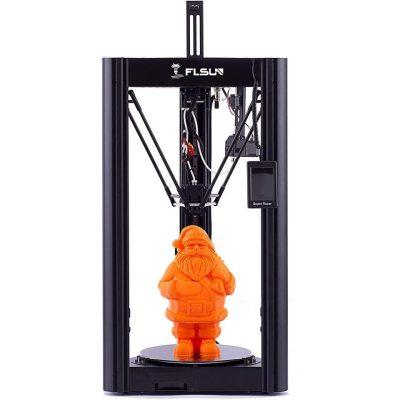

Moving on to a premium option, the Delta WASP 2040 PRO offers remarkable speed and precision.
Delta WASP 2040 PRO(A Premium Choice for High-Speed Printing)
As a premium Delta 3D printer, the Delta WASP 2040 PRO claims to be the world’s fastest, reaching speeds of up to 500 mm/s. Its sturdy aluminum frame ensures accuracy and reliability, while its auto-leveling bed and filament detection enhance user experience. Although expensive, this printer offers excellent features for professionals seeking top-tier performance.
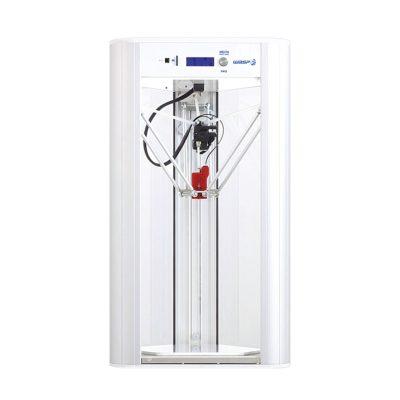

For those seeking simplicity, the FLSUN QQ-S Pro offers an easy-to-use solution.
FLSUN QQ-S Pro(A User-Friendly Delta 3D Printer)
The FLSUN QQ-S Pro is designed for users who want a simple yet effective printing experience. Its pre-built design, clear touchscreen interface, and efficient auto-leveling make it an accessible choice. Despite its large size, it offers high-quality prints and a range of features such as Wi-Fi connectivity and quiet operation.


The HE3D K280 Delta DIY caters to users looking for a customizable experience.
HE3D K280 Delta DIY(A Customizable Kit for Beginners to Advanced Users)
The HE3D K280 Delta DIY kit is a versatile printer that grows with users’ skill levels. Its massive print volume and compatibility with various materials make it a flexible option for hobbyists and professionals alike. Though assembly and default component quality may be challenging, its potential for customization and upgrades make it an appealing choice for those who want a tailored printing experience.


Lastly, for industrial use, SeeMeCNC Rostock MAX V4 is suitable.
SeeMeCNC Rostock MAX V4 (Industrial Grade)
SeeMeCNC Rostock MAX V4 offers professional-grade performance with impressive accuracy and reliability. This Delta 3D Printer comes fully assembled and boasts a large build volume of 280 x 280 x 350 mm, making it suitable for various printing applications. It features wireless printing capabilities, allowing users to start prints remotely, and an auto-leveling bed for hassle-free setup. Additionally, the Rostock MAX V4 is upgradable, offering an optional multi-color printing feature. However, its printing speed may not be as fast as other models on the list, and its size may seem bulky for some users. Despite these drawbacks, the Rostock MAX V4 remains an exceptional choice for those seeking a robust and versatile Delta 3D Printer.
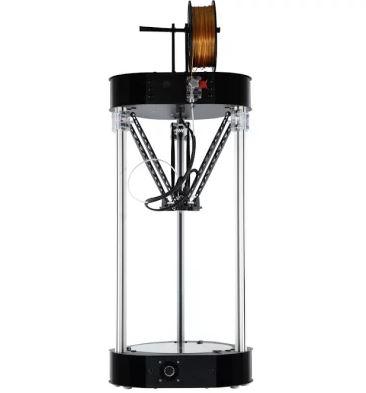

Comparative Analysis of Top Delta 3D Printer Models
| Model | Build Volume | Print Speed | Layer Resolution | Assembly | Auto-Leveling | Wi-Fi Connectivity | Filament Compatibility | Special Features |
|---|---|---|---|---|---|---|---|---|
| Monoprice Mini Delta V2 | 110 x 110 x 120 mm | Moderate | 50 microns | Pre-built | Yes | Yes | PLA Only | Budget-friendly |
| FLSUN Super Racer | 260 x 260 x 330 mm | Up to 200 mm/s | 50 microns | Minimal | Yes | Not mentioned | PLA, ABS, PETG, Flexibles | Detachable touchscreen |
| Delta WASP 2040 PRO | 200 x 200 x 400 mm | Up to 500 mm/s | 50 microns | Pre-built | Yes | Not mentioned | PLA, PETG, ABS, PA Carbon | Fastest 3D printer claim |
| FLSUN QQ-S Pro | 255 x 255 x 360 mm | Moderate | 50 microns | Pre-built | Yes | Yes | PLA, ABS, HIPS, Wood, PVA, Flexibles | Easy to use |
| HE3D K280 Delta DIY | 280 x 280 x 600 mm | Moderate | 50 microns | DIY Kit | Not mentioned | Yes | PLA, Flexible PLA, ABS, Wood, HIPS, Nylon | Customizable, large volume |
| SeeMeCNC Rostock MAX V4 | 280 x 280 x 350 mm | Slow | 50 microns | Pre-built | Yes | Not mentioned | PLA, ABS, Other Materials | Industrial grade, high precision |
Comparing Top Delta 3D Printer Models: Pros and Cons
| Model | Pros | Cons |
|---|---|---|
| Monoprice Mini Delta V2 | Extremely affordable, decent print quality, auto-leveling, Wi-Fi connectivity, easy to set up, sturdy construction | Small print volume, slow printing, prints only with PLA |
| FLSUN Super Racer (SR) | Blistering speed, good print quality, detachable touchscreen, easy setup, automated leveling, large print volume, good value | Needs careful settings, limited hot end temperature, and possible firmware updates |
| Delta WASP 2040 PRO | Pause and resume print, automatic filament detection, auto-leveling bed, reliable, high quality, super-fast, sturdy frame | Very expensive, side-fed filament spool |
| FLSUN QQ-S Pro | Simple setup, good print quality, quiet operation, Wi-Fi connectivity, affordable, auto-resume and filament runout sensors | Simple setup, good print quality, quiet operation, Wi-Fi connectivity, affordable, auto-resume, and filament runout sensors |
| HE3D K280 Delta DIY | Huge print volume, great for customization, works with PLA and ABS, active online community, Wi-Fi connectivity | Difficult assembly, mediocre print quality, no runout sensor or print resume features |
| SeeMeCNC Rostock MAX V4 | Huge build volume, upgradable extruder head, wireless printing, high precision, very reliable, can print most filament materials | A large machine, non-removable build plate, difficult part replacement |
Use Cases for Delta 3D Printers in Rapid Prototyping and Manufacturing
Delta 3D printers are transforming various industries with their capabilities in rapid prototyping and manufacturing. In the automotive sector, these printers facilitate the swift creation of intricate parts and design prototypes. Additionally, they play a crucial role in the aerospace industry by producing lightweight yet strong components. Architects and construction professionals also rely on Delta 3D printers to develop detailed building models and customized construction elements. Furthermore, the medical field benefits from the production of precise, patient-specific prosthetics and surgical tools. Ultimately, Delta 3D printers have become indispensable for numerous applications that require speed, accuracy, and adaptability.
Automotive and aerospace industry
In the automotive industry, Delta 3D printers have been employed by companies like BMW to produce complex parts with higher efficiency. For instance, the creation of custom jigs and fixtures for vehicle assembly has been streamlined, reducing production time and costs. Similarly, the aerospace industry has embraced Delta 3D printers for the manufacturing of lightweight yet strong components. A notable example is the collaboration between Airbus and Autodesk, which utilized a Delta 3D printer to create a 3D-printed partition for the A320 aircraft. This innovative design reduced weight by 45% and improved fuel efficiency, demonstrating the transformative potential of Delta 3D printers in both industries.
Medical and dental applications
Transitioning to the medical field, Delta 3D printers are playing an increasingly vital role in personalized healthcare. For example, orthopedic implants tailored to a patient’s unique anatomy can now be produced rapidly and accurately. Similarly, dental applications benefit from Delta 3D printers’ precision, enabling the creation of custom dental crowns, bridges, and orthodontic appliances. Align Technology, the company behind Invisalign, has harnessed Delta 3D printing technology to manufacture millions of clear aligners annually, revolutionizing the way orthodontic treatment is provided. The versatility and accuracy of Delta 3D printers continue to make a significant impact across various industries.
Consumer product development
Moving on to consumer product development, Delta 3D printers are accelerating the design process and reducing time-to-market. A prime example is the footwear industry, where companies like Adidas leverage Delta 3D printing technology to create and test innovative shoe designs rapidly. By using these printers, Adidas can quickly iterate on prototypes, refine designs, and ultimately deliver cutting-edge footwear that meets consumer demands. In essence, the advantages of Delta 3D printers extend beyond manufacturing industries, making waves in consumer product development as well.
Architectural and construction modeling
Delta 3D printers are being used in this industry to create accurate and detailed models of building designs, allowing architects and engineers to test their designs before construction. For example, the architectural firm Zaha Hadid Architects used a Delta 3D printer to create a detailed model of their design for the Al Wakrah Stadium in Qatar. The model allowed the architects to test the design for functionality and aesthetics before construction, leading to adjustments that improved the final product. Delta 3D printers have become a valuable tool in the architectural and construction industry, allowing for better visualization and testing of designs.
Challenges and Future Developments
Although Delta 3D Printers have many advantages, there are still certain difficulties to be solved. The narrow choice of materials that can be utilized in printing presents one significant challenge. Although there have been advancements in this area, it is still a worry. The assembling process’ intricacy, which can be time-consuming and demand a certain amount of technical knowledge, is another difficulty. However, it is anticipated that these issues will be solved in the future thanks to technological advancements. The creation of new materials and the streamlining of the assembly procedure in particular are anticipated to be crucial factors in the continued development and growth of Delta 3D Printers. Furthermore, additional automation and better software are anticipated to make Delta 3D Printers even more effective and user-friendly.
Material compatibility and improvements
The limited selection of materials that may be used with Delta 3D printers is one of its biggest drawbacks. Due to their hotends’ tendency to run at lower temperatures, delta 3D printers are often limited to using filaments like PLA, PETG, and TPU. But as technology develops, producers are beginning to create hotends that can work with materials with greater melting points, such as ABS and nylon. The introduction of composite filaments, which can give prints more strength and durability by containing components like wood, metal, and carbon fiber, is another fascinating development. Delta 3D printers will become even more adaptable and suited for a wider range of applications as these material possibilities continue to grow.
Innovations in software and firmware
Delta 3D printing technology has seen many advancements in software and firmware in recent years. One significant innovation is the use of machine learning algorithms to optimize print settings for specific models, resulting in better quality prints. Other software advancements include slicers that can automatically generate support structures, making printing more efficient and reducing waste. Firmware updates have also led to better printer calibration, more reliable and faster printing, and improved connectivity options. Additionally, cloud-based software solutions allow for remote printing and monitoring, enabling users to keep an eye on their prints from anywhere. With these continued innovations in software and firmware, Delta 3D printers will continue to improve their capabilities and produce high-quality prints with ease.
Advancements in Delta 3D printer technology
Since its beginnings, delta 3D printer technology has advanced significantly. With the development of new materials, advancements in software, and improvements in hardware, Delta 3D printers have become even more versatile and efficient.
One major development in Delta 3D printing technology is the introduction of new materials. Many Delta 3D printers can now print with a variety of materials beyond just plastics, such as metals, ceramics, and even food. This expansion of materials has opened up a whole new world of possibilities for Delta 3D printing applications.
Another advancement is the increase in print speed and accuracy. With the implementation of new technologies, such as linear rails and more precise sensors, Delta 3D printers can now achieve faster and more accurate prints. Time is saved, and the finished product is of higher quality as a result.
Furthermore, the integration of artificial intelligence (AI) and machine learning into Delta 3D printers has made them even more efficient and user-friendly. These technologies can be used to optimize printing settings, predict and prevent printing errors, and even automate the printing process entirely.
Looking to the future, it is clear that Delta 3D printing technology will continue to advance and evolve. With the ongoing development of new materials, software, and hardware, Delta 3D printers will become even more versatile, efficient, and accessible to users. We can expect to see further improvements in print speed and accuracy, as well as the integration of new technologies such as augmented reality and virtual reality into the Delta 3D printing process.
Conclusion
In conclusion, Delta 3D printers have come a long way since their introduction. They have proven to be a valuable tool for rapid prototyping, manufacturing, and various industries such as automotive, aerospace, medical, and architecture. With their unique design and functionality, Delta 3D printers offer a large build volume and faster printing speeds compared to traditional Cartesian printers. Despite some challenges and limitations, such as material compatibility and software/firmware advancements, the advancements in Delta 3D printer technology have been remarkable.
As Delta 3D printers continue to evolve, we can expect to see even more innovations and improvements in the near future. With the help of new materials and software developments, Delta 3D printers will be capable of producing even more intricate designs and complex structures. The addition of more user-friendly features will make them easier to operate and more accessible to a wider range of users. In the coming years, we can expect to see Delta 3D printers playing a significant role in manufacturing, construction, medical, and various other industries. The future of Delta 3D printing is exciting, and we look forward to seeing how it will continue to shape our world.
The impact of Delta 3D printers on rapid prototyping and manufacturing
In conclusion, the quick prototyping and manufacturing industries have been significantly impacted by Delta 3D printers. They have made it possible for engineers and designers to produce intricate designs with improved accuracy and efficiency. Manufacturers can now make prototypes and small-batch runs more quickly and affordably than ever before thanks to Delta 3D printers. The technology has also created new avenues for product modification and customization.
By making it possible to create intricate shapes and structures that would be impossible to make using conventional manufacturing techniques, delta 3D printers have transformed the industrial industry. Delta 3D printers have made it simple to make robust and useful prototypes and products because they can print in a variety of materials, from plastics to metals. Additionally, the improvements in software and firmware have improved the usability and intuitiveness of the designing and printing processes.
We may anticipate even more fascinating innovations in the future as Delta 3D printer technology develops. Automation of the entire manufacturing process, from design to production, will be achievable thanks to the integration of artificial intelligence and machine learning. Additionally, the creation of new materials and enhanced printing techniques will create new opportunities for the printing of functional and complicated items. Overall, Delta 3D printers have had a huge impact on the rapid prototyping and manufacturing sector, and we can only anticipate continued innovation and expansion in the years to come.
Outlook on the future of Delta 3D printers and their potential applications
Delta 3D printers have a bright future ahead of them, with countless uses for them. Delta 3D printers are developing into a more useful tool for numerous industries as material compatibility keeps getting better and software and firmware developments make 3D printing more accessible. The use of Delta 3D printers for quick prototyping and manufacturing has already proven beneficial in a number of industries, including the automotive, aerospace, medical, and architectural ones. We can anticipate seeing increasingly more varied applications as technology develops.
The creation of useful parts is one possible growth area for Delta 3D printers. Delta 3D printers may become a more practical choice for generating parts that are not only prototypes but can actually be used in products as materials compatibility advances and new materials become accessible. Industries like aerospace and automotive, where lightweight, high-strength parts are essential, may be significantly impacted by this.
Customization of products is another potential growth area for Delta 3D printers. Delta 3D printers could make it more affordable to produce specialized goods on a small scale by having the capacity to quickly and efficiently produce one-off pieces. This might create new markets for specialized goods and enable producers to offer their clients more specialized services.
Overall, Delta 3D printers have a promising future with a wide range of intriguing applications. We may anticipate increasingly more varied uses and a bigger impact on different businesses as technology develops.
How to choose the best Delta 3D printer for your needs?
- Determine your printing needs
To choose a Delta 3D printer, identify your intended use. Determine object size, design complexity, and materials.
- Consider the build volume
The build volume is the maximum size of the object that a printer can print. Make sure the build volume of the Delta 3D printer you choose meets your needs.
- Check the print speed
Delta 3D printer’s print speed is the time it takes to print an object. Opt for a high print speed if you need to print many objects.
- Look at the materials compatibility
Different Delta 3D printers are compatible with different materials, so make sure the printer you choose can handle the materials you need.
- Check the resolution and accuracy
The resolution and accuracy of a Delta 3D printer determine the level of detail and precision it can achieve. If you need to print very detailed or complex objects, you may want to choose a printer with high resolution and accuracy.
- Consider the software and firmware
The software and firmware of a Delta 3D printer can affect its ease of use and functionality. Look for printers with user-friendly software and up-to-date firmware.
- Look at the price
Delta 3D printers come in a wide range of prices, so make sure you choose one that fits your budget. Keep in mind that more expensive printers may offer more advanced features and better quality.
- Read reviews and comparisons
Before making a final decision, read reviews and comparisons of the Delta 3D printers you are considering. This can help you get a better idea of the pros and cons of each printer and make an informed decision.
By following these steps, you can choose the best Delta 3D printer for your needs and ensure that you get the most out of your investment.
FAQs
A Delta 3D printer is a type of 3D printer that uses a triangular configuration of three vertical arms to move the print head.
Delta 3D printers have several benefits, including fast print speeds, a larger build volume, and greater accuracy and precision.
Delta 3D printers can benefit a variety of industries, including automotive and aerospace, medical and dental, and architectural and construction modeling.
Consider factors such as print speed, build volume, accuracy and precision, and material compatibility when choosing a Delta 3D printer.
Challenges include material compatibility issues, software and firmware limitations, and the need for ongoing maintenance and calibration.

